If you’re planning a trip to a remote or off-the-grid location, it’s important to be prepared for any medical emergencies that may arise. Medical care may not be readily available in these areas and being self-sufficient is key to treating any injuries or illnesses that may occur.
One of the most important items to have on hand is a well-stocked first aid kit. Your first aid kit should include all the essentials needed to treat common injuries and illnesses in remote environments, such as adhesive bandages, sterile dressings, and antiseptic wipes.
It’s also important to tailor your first aid kit to your specific needs. Factors such as the duration of your trip, the remoteness of your location, and the activities you will be engaging in should all be taken into account when determining what to include in your kit.
Key Takeaways:
- Being self-sufficient is important in remote or off-the-grid locations.
- A well-stocked first aid kit is essential for treating common injuries and illnesses.
- The contents of your first aid kit should be tailored to your specific needs.
Understanding the Challenges of Remote Locations
Remote locations present unique challenges when it comes to accessing medical care. In such locations, medical facilities are scarce, and in case of an emergency, immediate professional help may not be available. Therefore, it is crucial to be self-sufficient and prepared for any medical emergencies that may arise.
When you’re in a remote area, you may have to navigate rugged terrain, extreme weather conditions and unfamiliar wildlife. In such situations, even minor injuries can become serious if not treated promptly. Therefore, it is essential to carry a well-stocked first aid kit that includes all the necessary supplies to address common injuries as well as more serious emergencies.
Being in a remote location also means that you might have to travel long distances to reach medical facilities. In some cases, it may not be possible to get immediate help. Therefore, it is essential to have wilderness first aid training that will enable you to provide effective medical care and make informed decisions in emergency situations.
In summary, remote locations pose unique challenges when it comes to accessing medical care. Having a well-stocked first aid kit and wilderness first aid training can make a significant difference in your ability to respond to an emergency effectively. Additionally, being prepared and knowledgeable about outdoor safety can reduce the risk of accidents and injuries in remote environments.

Assessing Your Needs
When it comes to first aid kits for remote locations, one size does not fit all. Each individual needs to assess their specific requirements based on factors such as the duration and remoteness of the location, as well as the activities they will be undertaking. By tailoring your first aid kit to meet your individual needs, you can ensure that you are well-prepared for any potential medical emergencies.
Duration of Your Trip: The length of your trip will impact the amount of supplies you will need to bring. For longer trips, it’s important to ensure that you have enough medical supplies to last the duration of your stay.
Remoteness of Your Location: The more remote your location, the greater the need for self-sufficiency in emergency situations. Consider investing in more advanced medical supplies, such as suture kits, if you will be far from medical facilities.
Activities You Will Be Engaging In: The activities you have planned will also impact the contents of your first aid kit. For example, if you will be hiking or rock climbing, you may require additional supplies such as splints or wound irrigation systems.
By taking the time to assess your needs, you can build a first aid kit that is tailored to your specific requirements and ensure that you are well-prepared for any potential medical emergencies that may arise in remote locations.

Essential First Aid Supplies
When it comes to creating a first aid kit for remote or off-the-grid locations, it’s important to include a variety of essential first aid supplies. These supplies can help you treat a wide range of injuries that may occur in remote environments. Here are some of the must-have medical supplies to consider:
| First Aid Supply | Description |
|---|---|
| Adhesive bandages | These come in various sizes and shapes and are ideal for covering minor cuts, scrapes, and blisters. |
| Sterile dressings | These are used to cover larger wounds to prevent infection and promote healing. They come in a range of sizes and can be secured in place with adhesive tape. |
| Gauze pads and rolls | Gauze can be used to pack wounds and control bleeding. |
| Antiseptic wipes/spray | These can help prevent infection by cleaning and disinfecting wounds. |
| Tweezers | Tweezers are essential for removing splinters, ticks, and other foreign objects from the skin. |
| Scissors | Scissors can help you cut clothing, gauze, and other materials when treating injuries. |
| Thermometer | A thermometer can help you monitor for signs of fever, which can indicate an infection. |
| Pain relievers | Pain relievers such as aspirin or ibuprofen can help alleviate pain and reduce inflammation. |
| Antihistamines | These can help alleviate allergy symptoms such as itching, swelling, and hives. |
| Medical gloves | Medical gloves can help prevent infection when treating wounds. |
| Tourniquet | A tourniquet can be used to control severe bleeding in emergency situations. |
These are just a few of the essential first aid supplies that should be included in a kit for remote locations. Tailor your kit to your specific needs based on the duration of your trip, the remoteness of your location, and the activities you will be engaging in. It’s always better to be over-prepared than under-prepared when it comes to medical emergencies in remote locations.
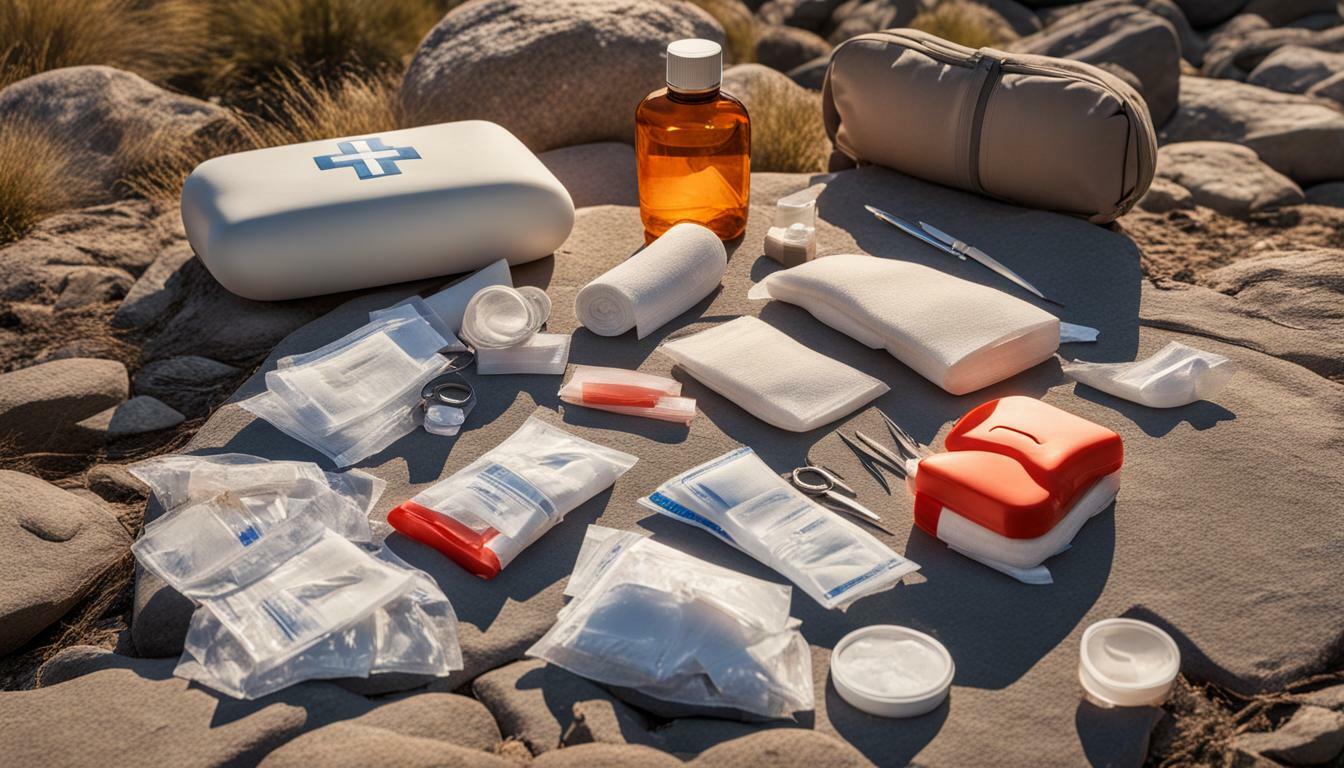
Wilderness First Aid Training
If you plan to venture into remote or off-the-grid locations, it’s important to have the skills to provide effective medical care in an emergency. Wilderness first aid training can prepare you for the unique challenges of wilderness environments, where professional medical help may not be available for hours, if not days.
Wilderness first aid training equips you with the knowledge and skills to handle medical emergencies in remote locations.
During the training, you will learn how to:
- Assess and manage injuries such as fractures, sprains, and dislocations
- Treat common medical issues such as hypothermia, heat exhaustion, and dehydration
- Handle wounds, burns, and blisters
- Perform CPR and use an Automated External Defibrillator (AED)
- Stabilize a sick or injured person for evacuation
Wilderness first aid training courses are typically offered by outdoor schools, wilderness medicine organizations, and search and rescue groups. The courses range in length from two-day to ten-day courses and may include a mix of classroom instruction and outdoor scenarios.
By taking a wilderness first aid course, you’ll be better equipped to handle emergency situations in remote locations.
Once you’ve completed the training, it’s important to continue practicing your skills to stay confident and prepared. Consider practicing with fellow outdoor enthusiasts or joining a search and rescue team in your area.
Don’t let lack of medical resources hold you back from exploring the great outdoors. Sign up for a wilderness first aid course today!
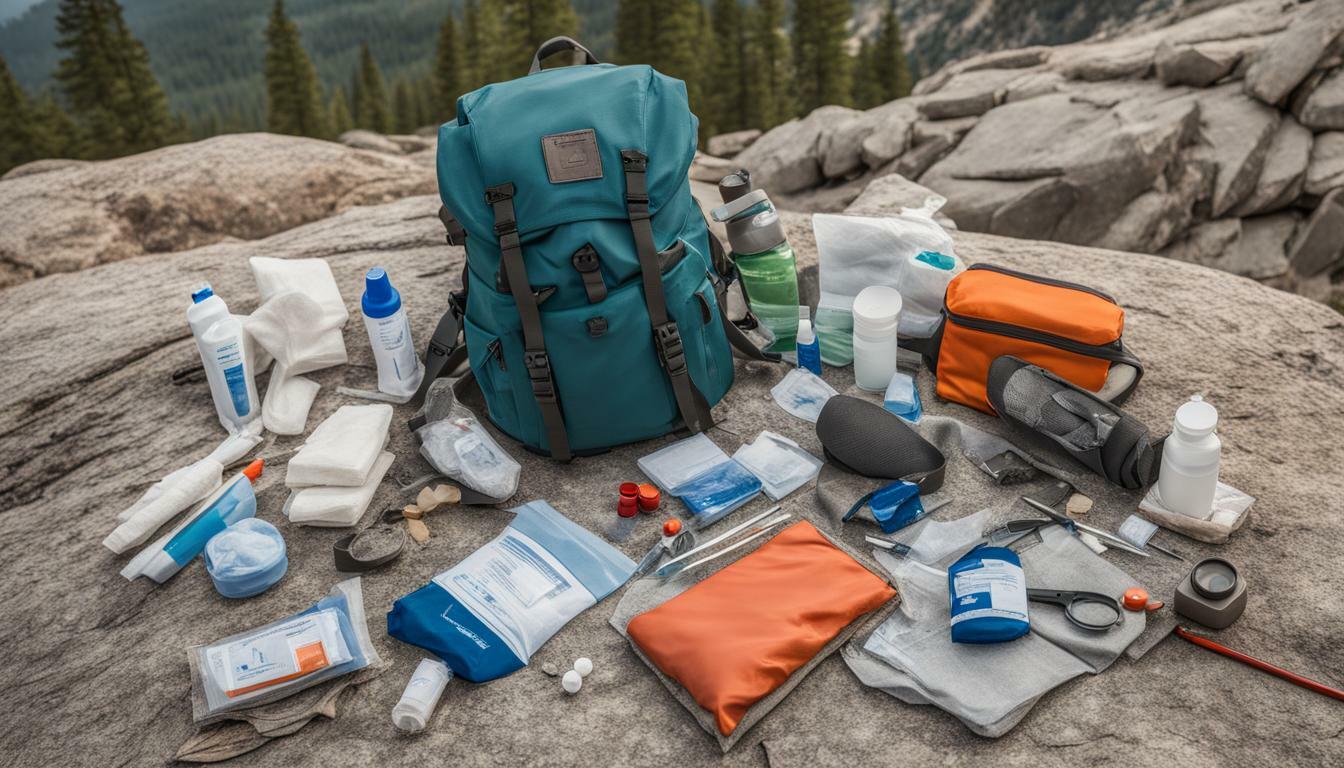
Building a Comprehensive First Aid Kit
Building a comprehensive first aid kit for remote or off-the-grid locations can seem daunting, but it is essential for ensuring your safety and well-being. By following these tips, you can create a customized first aid kit that meets your specific needs and allows you to respond effectively in emergency situations.
Assessing Your Needs- Before you start assembling your kit, take the time to assess your specific needs based on the duration of your trip, the remoteness of the location, and the activities you will be engaging in. This will help you determine which items are essential for your kit and ensure that you are properly prepared for any potential medical emergencies.
Essential First Aid Supplies- Your first aid kit should include essential medical supplies, such as adhesive bandages, sterile dressings, antiseptic wipes, tweezers, and more. These items are crucial for addressing common injuries and should be tailored to meet your specific needs.
| Item | Purpose |
|---|---|
| Adhesive bandages | For covering minor cuts and abrasions |
| Sterile dressings | For covering larger wounds and stopping bleeding |
| Antiseptic wipes | For cleaning wounds and preventing infection |
| Tweezers | For removing splinters and other small objects from the skin |
Wilderness First Aid Training- Consider enrolling in a wilderness first aid course to enhance your skills and knowledge in providing emergency medical care in remote environments. This specialized training can equip you with the knowledge and confidence to handle medical emergencies and navigate the challenges of off-the-grid locations.

Maintaining Your First Aid Kit- Regularly check and replace expired or used items, and stay updated on the latest medical advancements. This ensures that your kit is always equipped with the necessary supplies for any medical emergencies that may arise.
Additional Considerations for Off-the-Grid Locations- In addition to medical supplies, consider including survival tools, emergency communication devices, and navigation aids in your kit. Outdoor safety tips, such as proper hydration, navigation techniques, and wildlife encounters, should also be taken into account to prevent injuries and accidents in remote environments.
Additional Considerations for Off-the-Grid Locations
When venturing into off-the-grid locations, it’s crucial to be prepared for any scenario. Along with a well-stocked first aid kit, a survival kit containing essential tools and emergency communication devices should also be included.
One item to consider including is a multi-purpose knife, which can be used for cutting rope, starting fires, and preparing food. A compass or GPS device is also essential for navigation in remote environments.
Emergency communication devices such as a radio or satellite phone can be a lifeline in remote locations where cell service is not available. These devices can be used to call for help in case of an emergency or to provide updates on your location.
Outdoor safety should also be a top priority. When exploring remote environments, it’s crucial to have a good understanding of wildlife encounters and weather considerations. A sturdy shelter and adequate clothing can help protect against the elements, while food and water supplies should be carefully planned to ensure proper hydration and sustenance.
By including survival tools and emergency communication devices in your kit and staying vigilant about outdoor safety, you can enjoy a safe and fulfilling experience in off-the-grid locations.
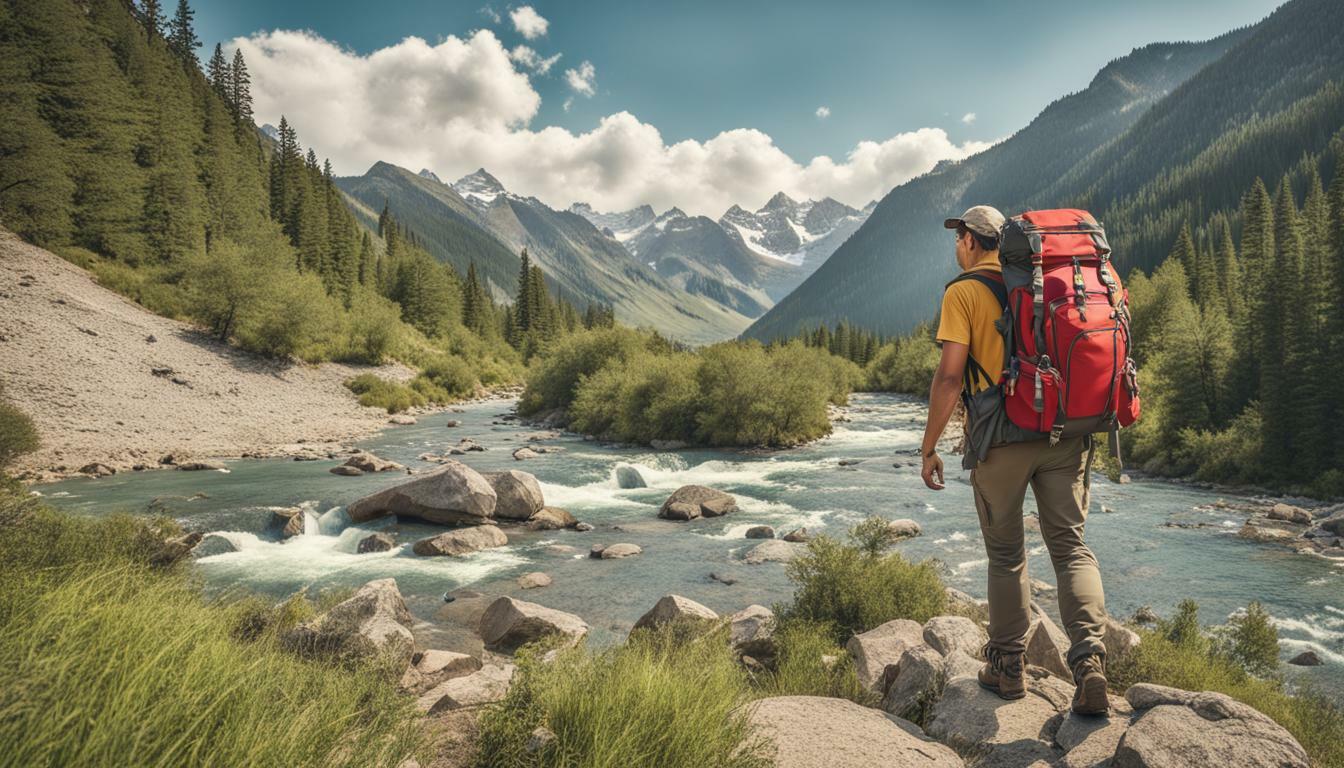
Maintaining Your First Aid Kit
Maintaining your first aid kit is essential to ensure that it is always fully stocked and ready to use when needed. Here are some tips to keep in mind when maintaining your first aid kit for remote locations.
Check for Expiration Dates
First aid supplies such as medications and ointments can expire quickly, so it is essential to check the expiration dates regularly. Discard any expired items and replace them with new ones to ensure that your kit is always up to date.
Replace Used Items
If you use any items from your first aid kit, be sure to replace them as soon as possible. Don’t wait until your next trip to restock your kit if you have used items on your previous trip.
Stay Up to Date
Medical advancements are constantly being made, and it’s essential to stay updated on any changes that may affect the contents of your first aid kit. Consider taking a refresher course in wilderness first aid or consulting with a medical professional to ensure that your kit meets current standards.
By following these tips, you can ensure that your first aid kit is always fully stocked and ready to use in case of an emergency.

Seeking Professional Help in Remote Locations
Despite being well-prepared with a comprehensive first aid kit, there may come a time when professional medical attention is necessary in remote locations. In such situations, it is crucial to have a plan in place and know how to seek help.
If you are in a group, designate one person to stay with the injured or ill party while others go for help. Ensure that they have a map, compass, and any other necessary navigation aids. It is essential to have clear communication with local authorities and understand their emergency protocols.
If you are alone, try to stay calm and assess the severity of the injury or illness. If you have a communication device, such as a satellite phone or emergency locator beacon, use it to call for help. If you don’t have one, try to make your way to the nearest point of civilization or find a way to signal for help.
It’s essential to have a contingency plan in case of emergency, including a plan for evacuation. Research evacuation routes and have a backup plan in case of unexpected circumstances. Being prepared and knowing how to seek help can make all the difference in a medical emergency in remote locations.
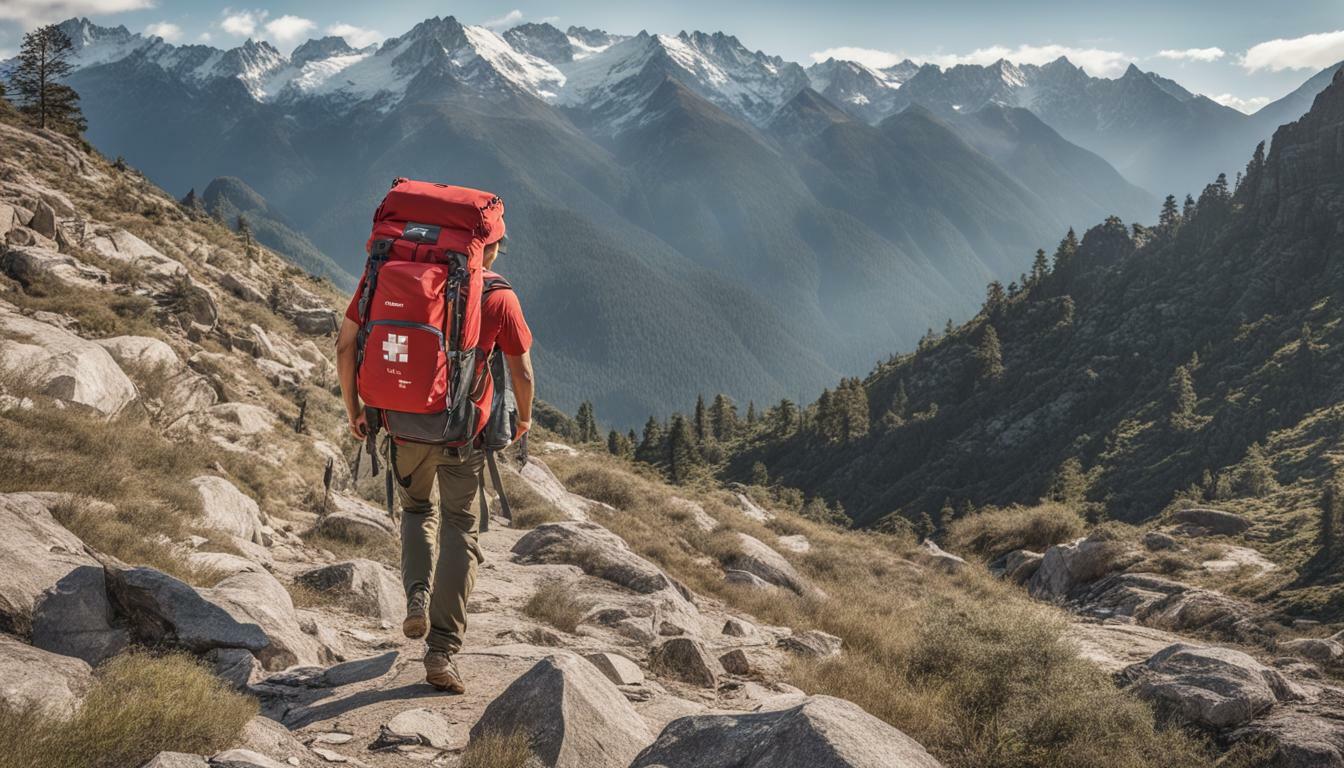
Staying Safe in Remote Environments
Exploring remote environments can be an exhilarating experience, but it’s important to take outdoor safety seriously. Whether you’re embarking on a day hike or a multi-day backpacking trip, the following tips can help you stay safe and enjoy your adventure!
- Stay hydrated: Dehydration can lead to fatigue, confusion and other symptoms that can put you at risk in remote environments. Make sure you drink plenty of water throughout the day, even if you don’t feel thirsty.
- Navigation: It’s important to know how to navigate in remote areas. Always bring a map and compass, and make sure you know how to use them before venturing off. Consider investing in a GPS device as a backup.
- Wildlife encounters: Wildlife encounters can be an awe-inspiring experience, but it’s important to take precautions to reduce the risk of negative interactions. Research the local wildlife and their behaviors before heading out, and always keep a safe distance.
- Weather conditions: The weather in remote areas can be unpredictable. Be prepared for sudden changes in weather by bringing appropriate clothing layers and rain gear. Check the weather forecast before heading out and stay up-to-date on any changes.
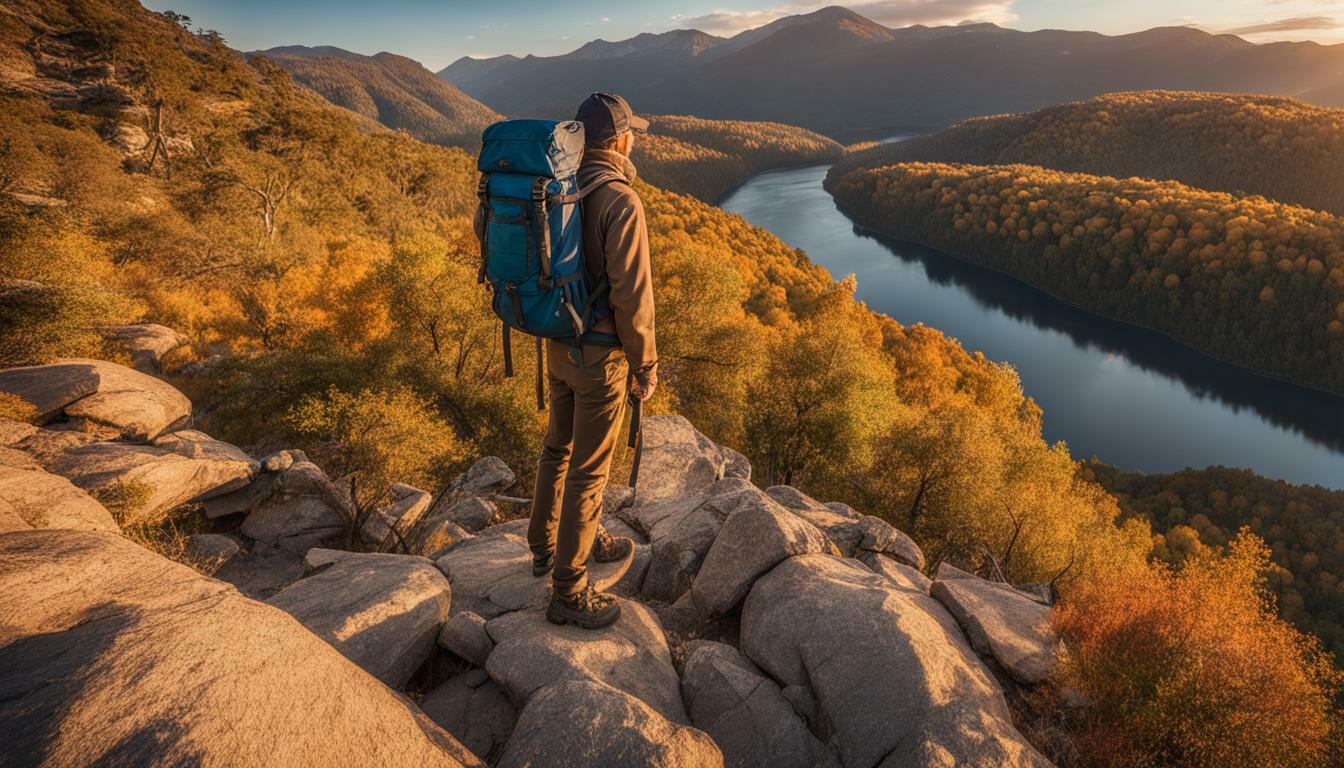
By following these tips, you can help ensure that your adventure in remote environments remains a safe one. However, it’s important to always be prepared for emergencies. That’s why having a well-stocked first aid kit and wilderness first aid training is so important. With proper preparation, you can enjoy all that remote environments have to offer with the peace of mind that you’re ready for whatever comes your way.
Conclusion
In conclusion, preparing a first aid kit for remote or off-the-grid locations is an essential step in ensuring your safety and well-being. Understanding the unique challenges of remote locations and assessing your individual needs are crucial in building a comprehensive first aid kit. Including essential supplies such as adhesive bandages, sterile dressings, and antiseptic wipes are vital in addressing common injuries.
Moreover, obtaining wilderness first aid training can enhance your ability to provide effective medical care in emergency situations. Building a comprehensive kit and incorporating survival tools, emergency communication devices and navigation aids are essential for off-the-grid locations.
Regular maintenance and restocking of your kit and staying updated on the latest medical advancements are equally important. Having a contingency plan and communicating with local authorities can help in seeking professional help in case of severe injuries or medical emergencies beyond the scope of your first aid kit.
Finally, staying safe in remote environments requires preparedness and vigilance. Proper hydration, navigation techniques, wildlife encounters and weather considerations are all crucial in ensuring a safe and enjoyable experience in remote locations.
By following these tips and exploring further resources and training options, you can enhance your wilderness first aid skills and be well-equipped for any potential medical emergency.
